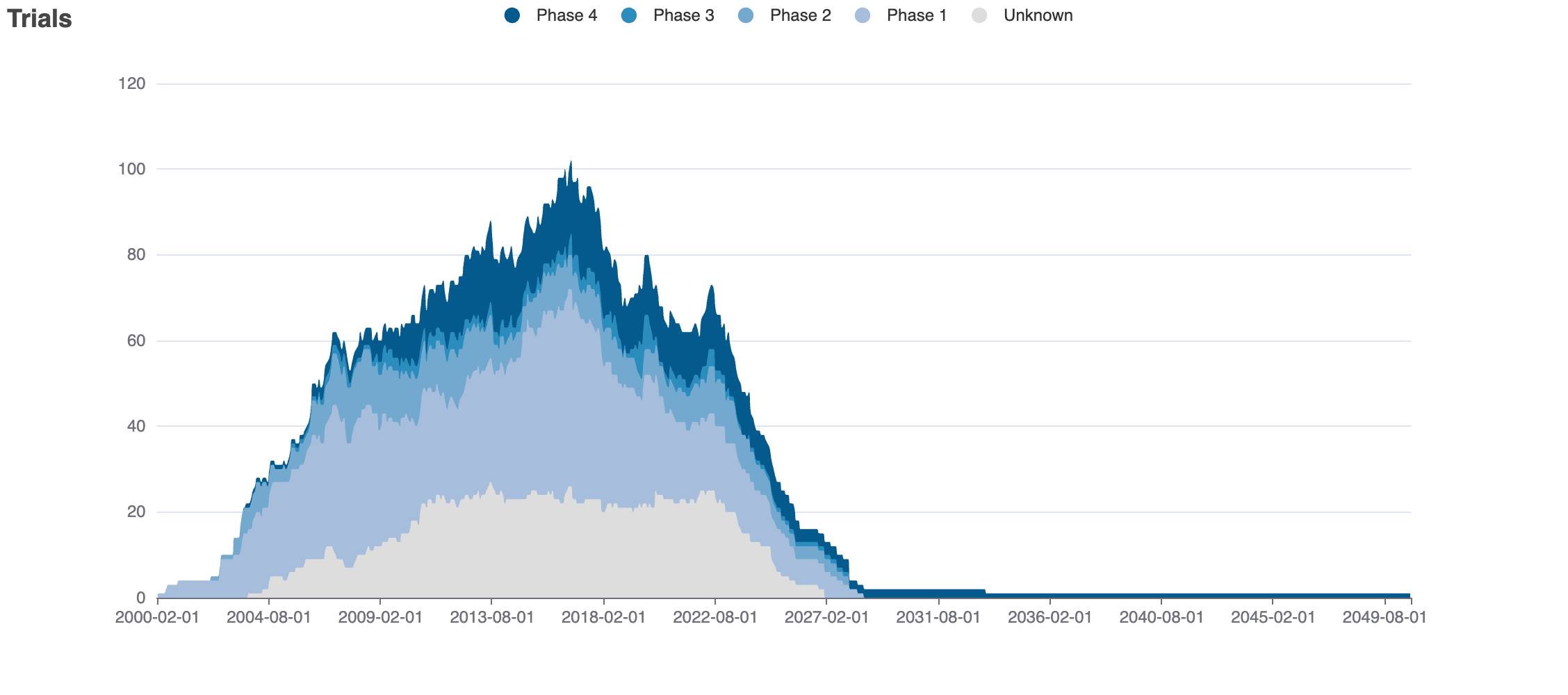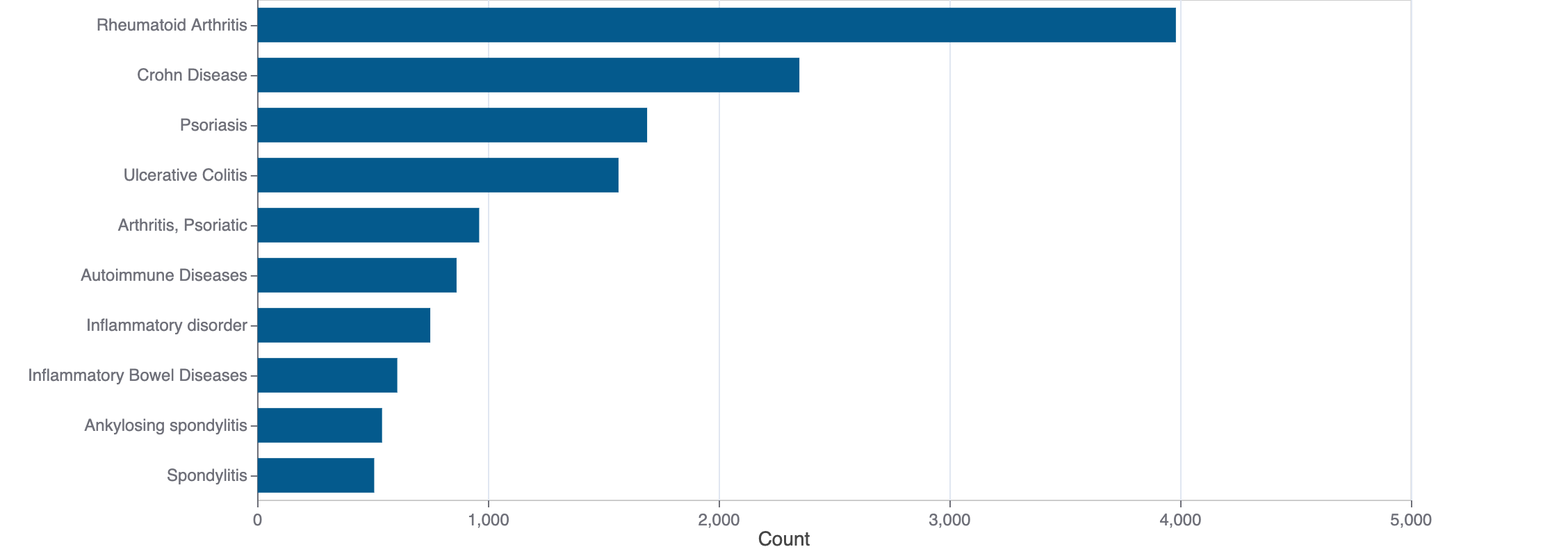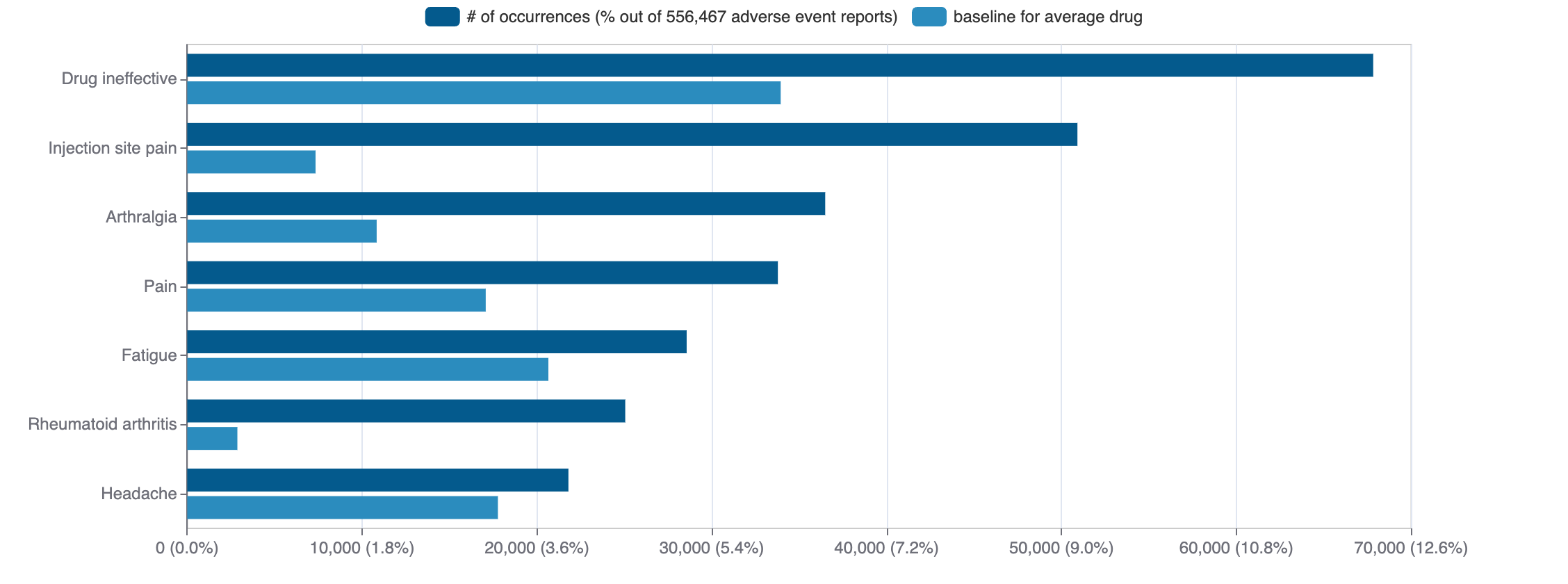Enablex, Emselex(darifenacin hydrobromide)
Emselex, Enablex (darifenacin hydrobromide) is a small molecule pharmaceutical. Darifenacin hydrobromide was first approved as Emselex on 2004-10-22. It is used to treat overactive urinary bladder and urge urinary incontinence in the USA. It has been approved in Europe to treat overactive urinary bladder and urge urinary incontinence. It is known to target muscarinic acetylcholine receptor M3 and muscarinic acetylcholine receptor M1.
Download report
Favorite
Commercial
Therapeutic Areas
Therapeutic Area | MeSH |
|---|---|
| urogenital diseases | D000091642 |
| signs and symptoms pathological conditions | D013568 |
Trade Name
FDA
EMA
No data
Drug Products
FDA
EMA
New Drug Application (NDA)
New Drug Application (NDA)
Abbreviated New Drug Application (ANDA)
Abbreviated New Drug Application (ANDA)
Darifenacin hydrobromide
Tradename | Company | Number | Date | Products |
|---|---|---|---|---|
| ENABLEX | AbbVie | N-021513 DISCN | 2004-12-22 | 2 products, RLD |
Hide discontinued
Labels
FDA
EMA
Brand Name | Status | Last Update |
|---|---|---|
| darifenacin | ANDA | 2022-12-01 |
| darifenacin | ANDA | 2023-01-25 |
| enablex | New Drug Application | 2010-01-01 |
Indications
FDA
EMA
Indication | Ontology | MeSH | ICD-10 |
|---|---|---|---|
| overactive urinary bladder | EFO_1000781 | D053201 | N32.81 |
| urge urinary incontinence | EFO_0006865 | D053202 | N39.41 |
Agency Specific
FDA
EMA
No data
Patent Expiration
No data
HCPCS
No data
Clinical
Clinical Trials
22 clinical trials
View more details

Mock data
Subscribe for the real data
Subscribe for the real data
Indications Phases 4
Indication | MeSH | Ontology | ICD-10 | Ph 1 | Ph 2 | Ph 3 | Ph 4 | Other | Total |
|---|---|---|---|---|---|---|---|---|---|
| Overactive urinary bladder | D053201 | EFO_1000781 | N32.81 | — | 1 | 3 | 2 | 6 | 12 |
| Healthy volunteers/patients | — | 2 | 1 | — | 1 | — | 4 | ||
| Nocturia | D053158 | R35.1 | — | — | — | 1 | — | 1 | |
| Urinary incontinence | D014549 | HP_0000020 | R32 | — | — | — | 1 | — | 1 |
| Spinal cord injuries | D013119 | EFO_1001919 | — | — | — | 1 | — | 1 |
Indications Phases 3
No data
Indications Phases 2
Indication | MeSH | Ontology | ICD-10 | Ph 1 | Ph 2 | Ph 3 | Ph 4 | Other | Total |
|---|---|---|---|---|---|---|---|---|---|
| Multiple sclerosis | D009103 | EFO_0003885 | G35 | — | 1 | — | — | — | 1 |
Indications Phases 1
Indication | MeSH | Ontology | ICD-10 | Ph 1 | Ph 2 | Ph 3 | Ph 4 | Other | Total |
|---|---|---|---|---|---|---|---|---|---|
| Therapeutic equivalency | D013810 | 2 | — | — | — | — | 2 |
Indications Without Phase
Indication | MeSH | Ontology | ICD-10 | Ph 1 | Ph 2 | Ph 3 | Ph 4 | Other | Total |
|---|---|---|---|---|---|---|---|---|---|
| Parkinson disease | D010300 | EFO_0002508 | G20 | — | — | — | — | 1 | 1 |
| Renal colic | D056844 | EFO_1001412 | N23 | — | — | — | — | 1 | 1 |
| Postoperative pain | D010149 | G89.18 | — | — | — | — | 1 | 1 |
Epidemiology
Epidemiological information for investigational and approved indications
View more details
Drug
General
| Drug common name | DARIFENACIN HYDROBROMIDE |
| INN | darifenacin |
| Description | Darifenacin is 2-[(3S)-1-Ethylpyrrolidin-3-yl]-2,2-diphenylacetamide in which one of the hydrogens at the 2-position of the ethyl group is substituted by a 2,3-dihydro-1-benzofuran-5-yl group. It is a selective antagonist for the M3 muscarinic acetylcholine receptor, which is primarily responsible for bladder muscle contractions, and is used as the hydrobromide salt in the management of urinary incontinence. It has a role as a muscarinic antagonist and an antispasmodic drug. It is a member of 1-benzofurans, a member of pyrrolidines and a monocarboxylic acid amide. |
| Classification | Small molecule |
| Drug class | muscarinic receptor antagonists |
| Image (chem structure or protein) | |
| Structure (InChI/SMILES or Protein Sequence) | Br.NC(=O)C(c1ccccc1)(c1ccccc1)[C@@H]1CCN(CCc2ccc3c(c2)CCO3)C1 |
Identifiers
| PDB | — |
| CAS-ID | 133099-04-4 |
| RxCUI | 136198 |
| ChEMBL ID | CHEMBL1200935 |
| ChEBI ID | 31455 |
| PubChem CID | 444031 |
| DrugBank | DB00496 |
| UNII ID | APG9819VLM (ChemIDplus, GSRS) |
Target
Agency Approved
No data
Alternate
Variants
Clinical Variant
No data
Financial
No data
Trends
PubMed Central
Top Terms for Disease or Syndrome:

Mock data
Subscribe for the real data
Subscribe for the real data
Additional graphs summarizing 799 documents
View more details
Safety
Black-box Warning
No Black-box warning
Adverse Events
Top Adverse Reactions

Mock data
Subscribe for the real data
Subscribe for the real data
535 adverse events reported
View more details
Premium feature
Learn more about premium features at pharmakb.com
Learn more
